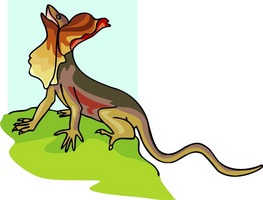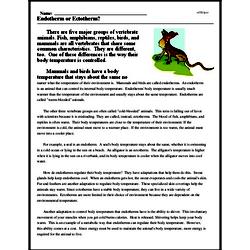Endotherm or Ectotherm?
There are five major groups of vertebrate animals. Fish, amphibians, reptiles, birds, and mammals are all vertebrates that share some common characteristics. They are different, too. One of these differences is the way their body temperature is controlled.
Mammals and birds have a body temperature that stays about the same no matter what the temperature of their environment is. Mammals and birds are called endotherms. An endotherm is an animal that can control its internal body temperature. Endotherms' body temperature is usually much warmer than the temperature of the environment and usually stays about the same temperature. Endotherms are called "warm-blooded" animals.
The other three vertebrate groups are often called "cold-blooded" animals. This term is falling out of favor with scientists because it is misleading. They are called, instead, ectotherms. The blood of fish, amphibians, and reptiles is often warm. Their body temperatures are close to the temperature of their environment. If the environment is cold, the animal must move to a warmer place. If the environment is too warm, the animal must move into a cooler place.




